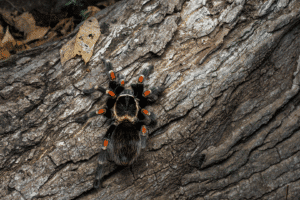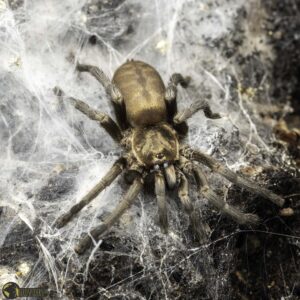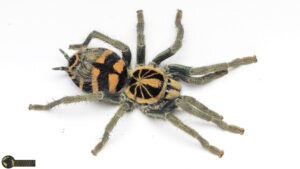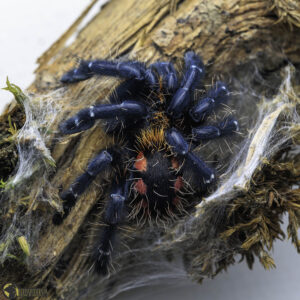Overview
Discover an exciting, undescribed tarantula species from Ecuador! This captivating captive-bred specimen holds much mystery, and only time will reveal its true identity as it matures. Enthusiasts and researchers alike are eager to learn more about this unique tarantula, which may belong to the genus Euathlus, although this genus is not known from that far north in Ecuador. Join us in the journey of discovery and conservation for these fascinating arachnids.
Natural History of the New Ecuadorian Tarantula
The newly discovered tarantula specimen originates from Ecuador, a country known for its rich biodiversity and varied ecosystems. Tarantulas in this region often inhabit forested areas, sometimes at higher elevations. The genus Euathlus, to which this new species might be related, typically includes medium-sized tarantulas found in the Andes mountains, often at high elevations. These spiders are adapted to cooler climates and mountainous terrain, which influences their behavior and physiology.
As the specimen matures, its physical and behavioral characteristics will become clearer, helping to determine its exact classification and ecological niche. Observing captive-bred individuals provides valuable insights into their growth patterns, lifespan, and reproductive habits, which are crucial for conservation efforts.
Taxonomy & Systematics of Euathlus and Related Tarantulas
The genus Euathlus was first described by Anton Ausserer in 1875 and is part of the family Theraphosidae, commonly known as true tarantulas. This genus is a senior synonym of Paraphysa and was once considered a senior synonym of Brachypelma, though this was later rejected. Euathlus species are primarily distributed in South America, especially in Chile and Argentina, with habitats in the Andes mountains.
Currently, the genus includes several species such as Euathlus truculentus and Euathlus manicata, mostly found in Chile and Argentina. The discovery of a potential new species in Ecuador, north of the known range, suggests either a range expansion or a distinct, previously undocumented species. Taxonomic classification will rely on morphological studies and genetic analysis as the specimen matures.
Husbandry of Captive-Bred Tarantulas from Ecuador
Keeping a captive-bred tarantula from Ecuador, especially one potentially related to Euathlus, requires attention to its natural habitat conditions. These tarantulas thrive in environments that mimic their native Andean habitats, which include:
- Temperature: Maintain a cooler temperature range of about 15-22°C (59-72°F) to simulate high elevation climates.
- Humidity: Moderate humidity levels around 60-70% are ideal, reflecting the moist forest environment.
- Substrate: Use a deep substrate of coconut fiber or peat moss to allow burrowing behavior.
- Enclosure: Provide a secure enclosure with adequate ventilation and hiding spots such as cork bark or artificial caves.
- Feeding: Offer a diet of appropriately sized insects like crickets, roaches, or mealworms, feeding every 7-10 days.
Patience is key when caring for a young tarantula, as its growth and coloration will change over time. Observing its development will help in identifying its species and understanding its specific care needs.
References
- Ausserer, A. (1875). “Beiträge zur Kenntniss der Arachniden-Familie der Territelariae Thorell (Mygalidae Autor)”. Verhandlungen der Kaiserlich-Königlichen Zoologisch-Botanischen Gesellschaft in Wien.
- World Spider Catalog. (2024). “Family: Theraphosidae Thorell, 1869”. Natural History Museum Bern. Retrieved from http://www.wsc.nmbe.ch/family/100
- Wikipedia contributors. (2024). “List of Theraphosidae species”. Wikipedia. Retrieved April 2024, from https://en.wikipedia.org/wiki/List_of_Theraphosidae\_species






